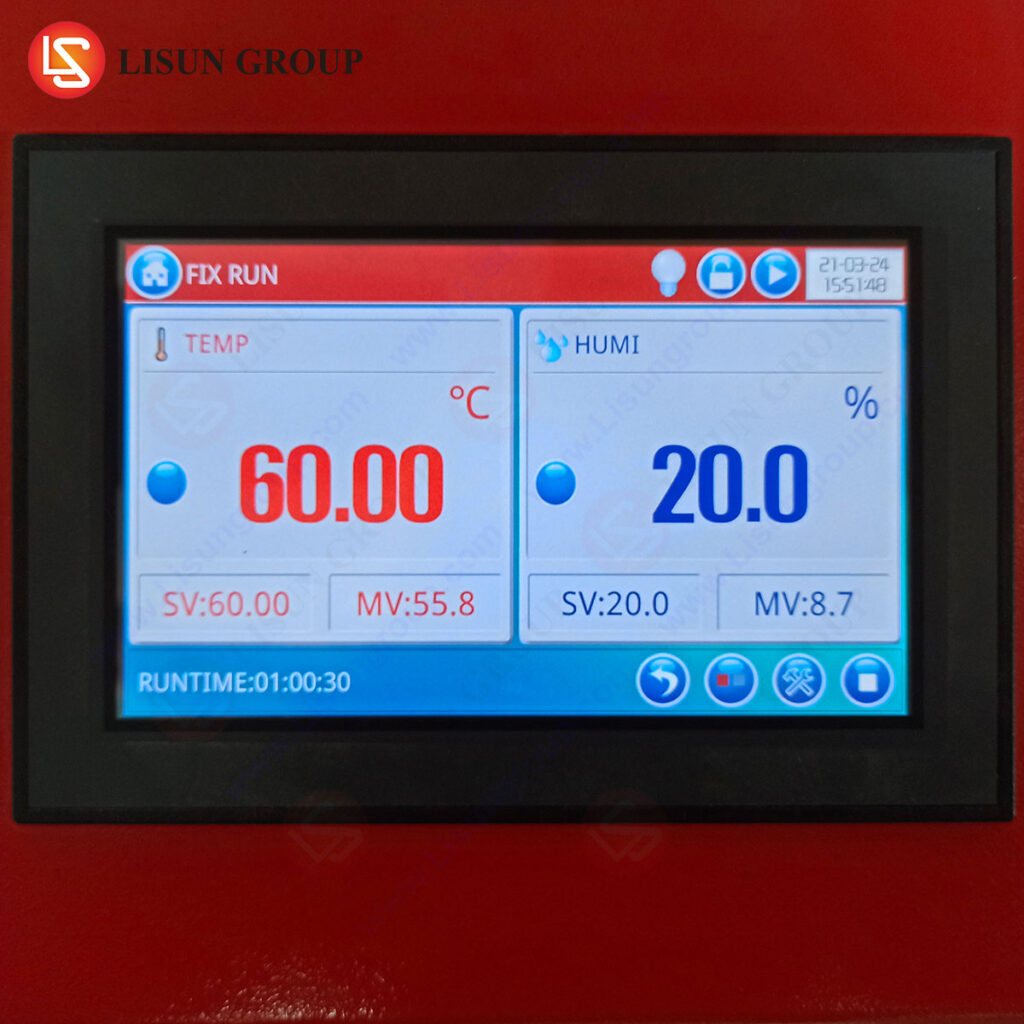LED Testing in temperature humidity chambers: A Comprehensive Guide to Test LED Driver or Mobile or Automotive Electronics
Introduction
LEDs are becoming increasingly popular in a variety of applications, from automotive lighting to mobile phones and other consumer electronics. As such, it is important to ensure that these devices are tested for their performance in a variety of environmental conditions. Temperature and humidity chambers are the perfect tool for this purpose, as they can simulate a wide range of conditions and provide accurate results. This guide will provide an overview of LED testing in temperature and humidity chambers, including the types of tests that can be performed, the benefits of using a chamber, and the best practices for testing.
Types of Tests
When testing LEDs in a temperature and humidity chamber, there are a variety of tests that can be performed. These tests can include:
• Temperature Cycling: This test is used to determine the performance of the LED under different temperature conditions. The LED is cycled between two different temperatures, and the performance is monitored to ensure that it is not affected by the changes in temperature.
• Humidity Cycling: This test is used to determine the performance of the LED under different humidity conditions. The LED is cycled between two different humidity levels, and the performance is monitored to ensure that it is not affected by the changes in humidity.
• Thermal Shock: This test is used to determine the performance of the LED under extreme temperature conditions. The LED is subjected to rapid changes in temperature, and the performance is monitored to ensure that it is not affected by the changes in temperature.
• Vibration Testing: This test is used to determine the performance of the LED under vibration conditions. The LED is subjected to vibration, and the performance is monitored to ensure that it is not affected by the vibration.
• Salt Spray Testing: This test is used to determine the performance of the LED under salt spray conditions. The LED is subjected to salt spray, and the performance is monitored to ensure that it is not affected by the salt spray.
• Corrosion Testing: This test is used to determine the performance of the LED under corrosion conditions. The LED is subjected to corrosion, and the performance is monitored to ensure that it is not affected by the corrosion.
Benefits of Using a Chamber
Using a temperature and humidity chamber for LED testing has a number of benefits. First, it allows for accurate and repeatable testing conditions. This ensures that the results of the tests are reliable and can be used to make informed decisions about the performance of the LED. Additionally, using a chamber allows for the testing of multiple LEDs at once, which can save time and money. Finally, using a chamber allows for the testing of LEDs in a variety of environmental conditions, which can help to identify any potential issues that may arise in different conditions.
Best Practices for Testing
When testing LEDs in a temperature and humidity chamber, there are a few best practices that should be followed. First, it is important to ensure that the chamber is calibrated correctly before testing. This will ensure that the results of the tests are accurate and reliable. Additionally, it is important to ensure that the LED is properly secured in the chamber before testing. This will help to ensure that the LED is not damaged during the testing process. Finally, it is important to ensure that the LED is tested in a variety of environmental conditions. This will help to identify any potential issues that may arise in different conditions.
FAQs
Q: What is LED testing?
A: LED testing is the process of testing LEDs in a variety of environmental conditions to ensure that they are performing as expected. This can include temperature cycling, humidity cycling, thermal shock, vibration testing, salt spray testing, and corrosion testing.
Q: What is a temperature and humidity chamber?
A: A temperature and humidity chamber is a device that is used to simulate a variety of environmental conditions. This allows for accurate and repeatable testing of LEDs in a variety of conditions.
Q: What are the benefits of using a temperature and humidity chamber for LED testing?
A: The benefits of using a temperature and humidity chamber for LED testing include accurate and repeatable testing conditions, the ability to test multiple LEDs at once, and the ability to test LEDs in a variety of environmental conditions.
Q: What are the best practices for LED testing in a temperature and humidity chamber?
A: The best practices for LED testing in a temperature and humidity chamber include ensuring that the chamber is calibrated correctly before testing, ensuring that the LED is properly secured in the chamber before testing, and ensuring that the LED is tested in a variety of environmental conditions.
Conclusion
LED testing in temperature and humidity chambers is an important part of ensuring that LEDs are performing as expected in a variety of environmental conditions. This guide has provided an overview of LED testing in temperature and humidity chambers, including the types of tests that can be performed, the benefits of using a chamber, and the best practices for testing. By following these best practices, it is possible to ensure that LEDs are performing as expected in a variety of conditions.







